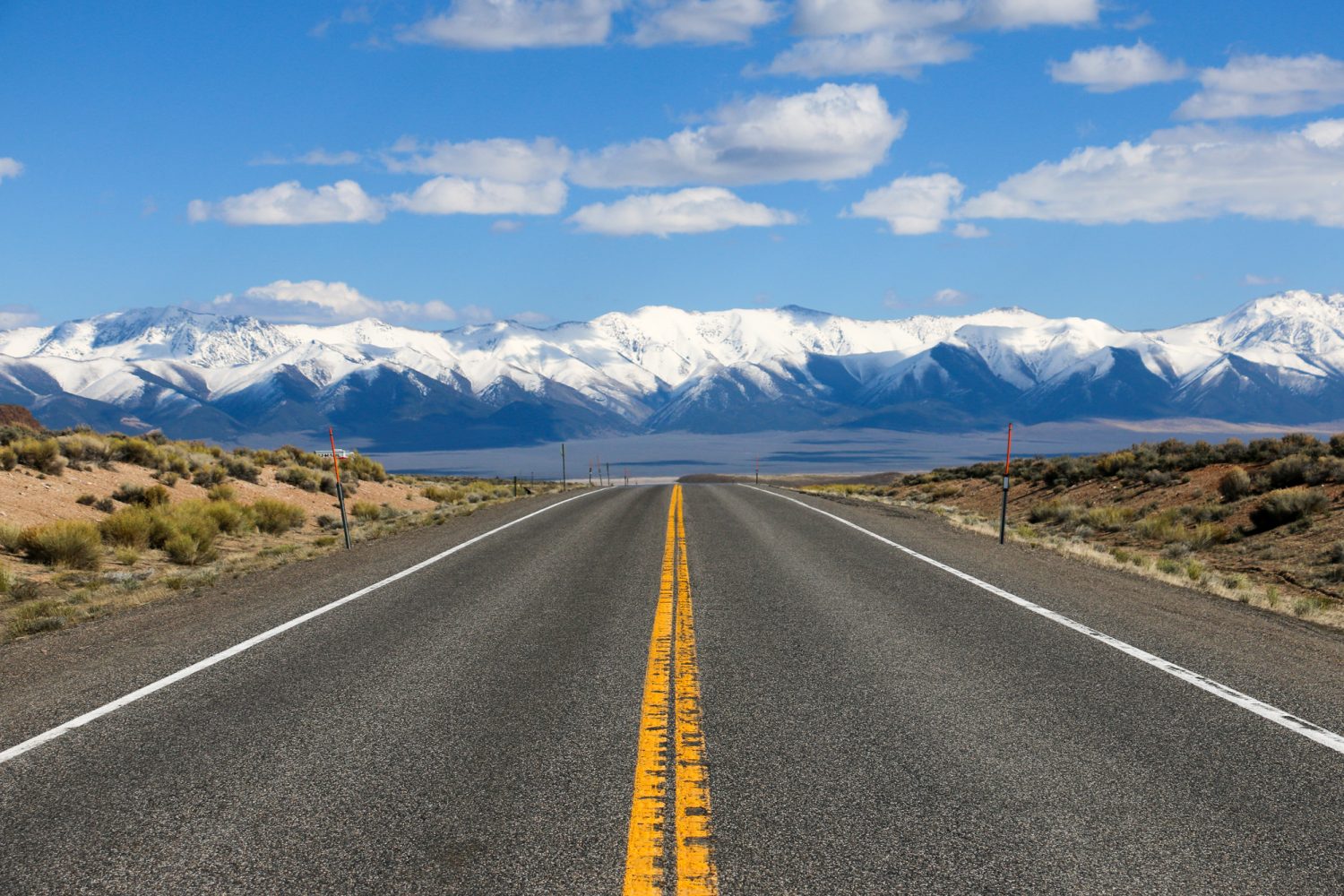The sweet smell of carne asada wafted up from the pan below, and I inhaled deeply over the slowly rising steam. It still needed something—maybe a little more lime juice? I turned to the prep table and sliced one open, squeezing it onto the dish with a satisfying sizzle. Perfect. It was hard to believe that just 30 minutes ago we had been cruising down the highway when the sight of distant sand dunes had drawn us off course, and now a mile or so of dusty roads later we were cooking a taco dinner for two, ice cold beers included. This was the way to cook. This was the way to travel.
 A few months ago I received an email from Al Smith, designer and owner of Overland Kitchen (formerly Jeep Kitchen). He was planning a trip from Victoria, British Columbia, to Vegas, and wanted to know if I’d like to ride shotgun on the way south. Uh, yeah, but what’s the catch? Apparently, it was that I’d be cooking, and in the process, getting to know the ins and outs of his overland kitchen. That seemed like a pretty fair trade, so a few weeks later I found myself hopping on a plane to the Pacific Northwest.
A few months ago I received an email from Al Smith, designer and owner of Overland Kitchen (formerly Jeep Kitchen). He was planning a trip from Victoria, British Columbia, to Vegas, and wanted to know if I’d like to ride shotgun on the way south. Uh, yeah, but what’s the catch? Apparently, it was that I’d be cooking, and in the process, getting to know the ins and outs of his overland kitchen. That seemed like a pretty fair trade, so a few weeks later I found myself hopping on a plane to the Pacific Northwest.
Initial Impressions
Once I arrived, I didn’t have to wait long for a first impression. Walking out of the terminal I immediately spotted a black JK, complete with a gleaming silver drawer system in the back. It packed two 28.4″ x 16.03″ x 5.5″ drawers, a 50-quart ARB Fridge Freezer, and a stove slide with an integrated prep surface and pot storage. There were no bulky handles or excessive gaps, the edges were rounded and polished, and with the exception of a few bits of hardware, the entire structure was made from stainless steel. It looked good, really good. I tossed my duffels on top of it and we headed for our first stop, the grocery store.
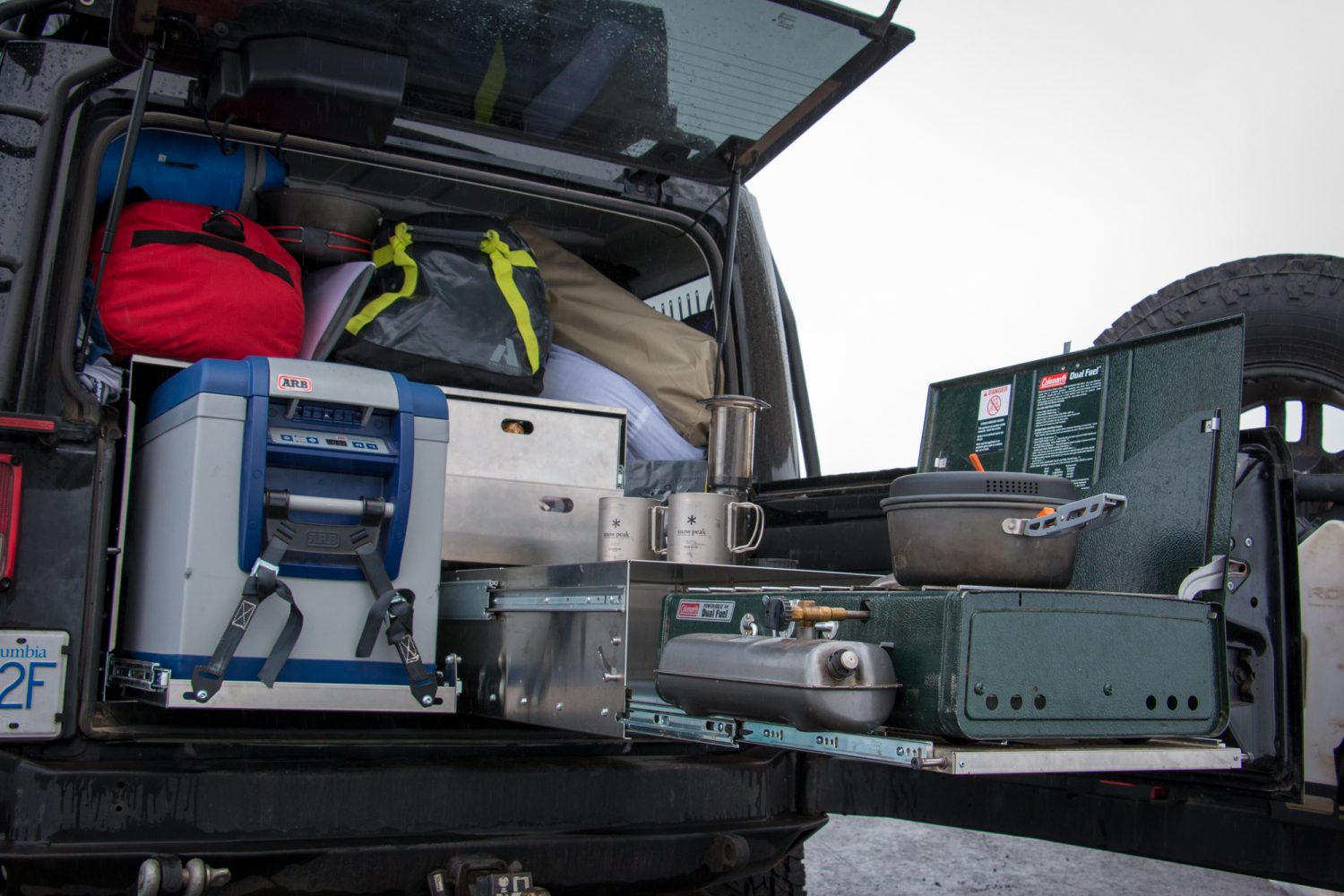
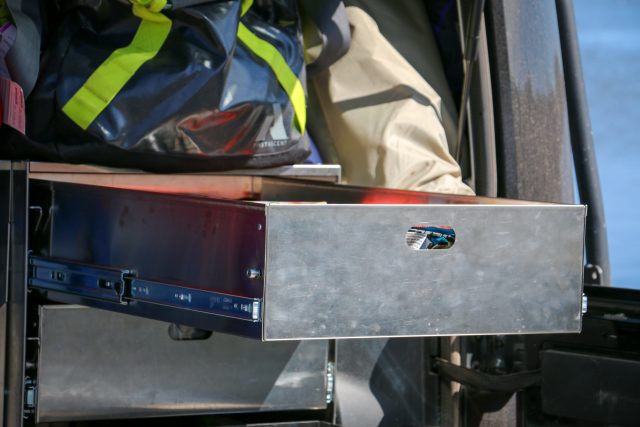
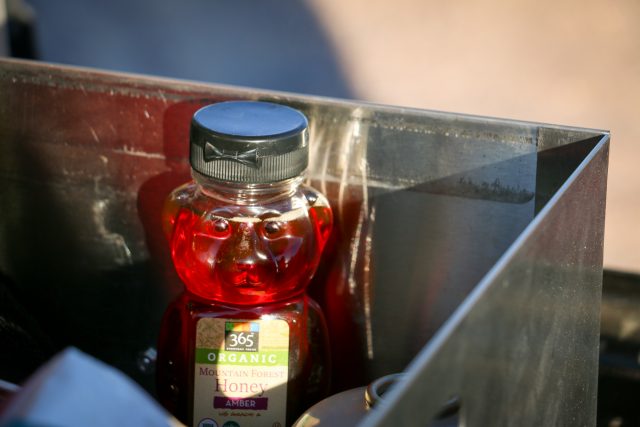

Since I’d be the chef on this trip, I purchased as many ingredients as my limited cooking experience would allow and began loading them into the drawers. From cans to bags to boxes, things just seemed to slide into place. That seemed odd considering I usually play Tetris for 10 minutes trying to make everything fit, but Al wasn’t surprised. Apparently, he designed the drawer sizes by measuring everything he and his friends carried on their trips. If something didn’t fit on one of their outings, he’d adjust the height and width of the next drawer model and try it again. The result? Almost all the common grocery items tuck easily into the drawers, even the little honey bears.
Design
It was the first of many aha moments on the trip. Whether we were stopping to make coffee on the trail or pulling over for lunch, these small details that made big differences continued to pop up. Examples include things like the slide tensioners that stabilize the stove and prep table while you’re cooking, the rear angle of the kitchen to allow it to fit behind the back seat of a Jeep, or the ventilation cutouts in the fridge box—an often overlooked feature that greatly affects your fridge’s longevity. It’s like Al created a collection of features you didn’t know you needed, to solve problems that you didn’t know you had. I have to admit that I was initially surprised by the amount of forethought, but once I learned of his background it all began to make sense.
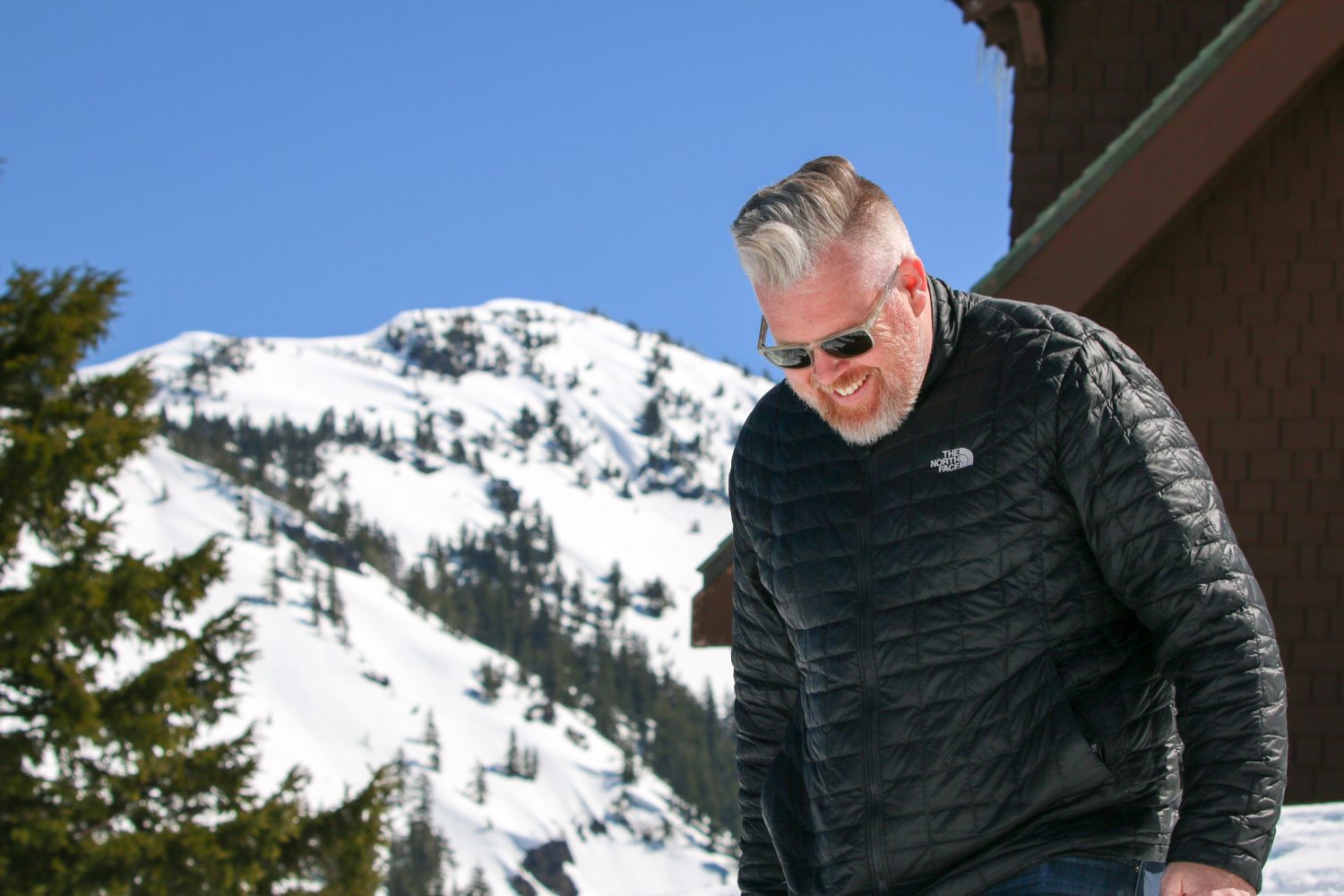
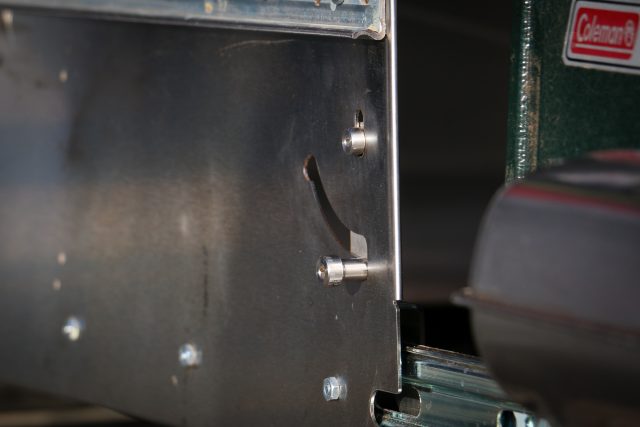
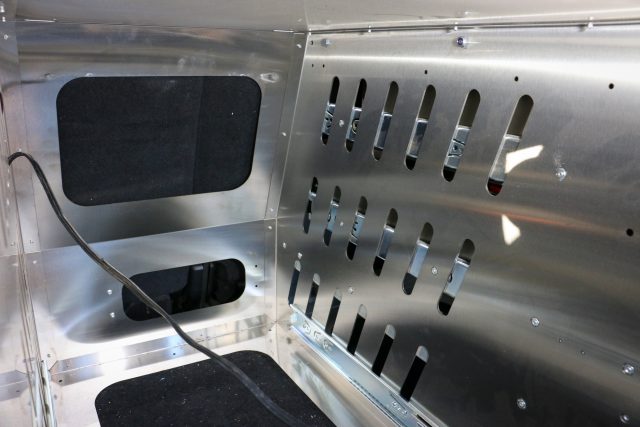
You see, Al comes from a family of engineers and began his career working with some of the country’s leading aviation firms. In those industries, a loose part or overlooked problem can spell disaster, so he’s all about the details when it comes to development. His testing process is scrupulous, and evaluations include everything from load testing to sound checks on which slides create the least noise off-road. The result is a system that after thousands of off-road miles still feels like new, and has yet to have a single failure.
Of course, a product not breaking is far from setting the gold standard, so lets take a look at some of the features that the Overland Kitchen can hang its hat on.
Features
The first thing I noticed (or rather didn’t notice) were the rattles. Even though we evaluated one of Al’s oldest kitchens, it was silent in the back of his vehicle. This is due in part to the strenuous testing I mentioned above, but I believe the true secret lies in the ability to tension almost every component on the product, from the walls to the latches. Why would you need such a feature? Because over time the vibrations from bumps and corrugations shave down the metal, causing gaps and eventually rattles. The ability to tighten the nuts and bolts allows you to compensate for that with the turn of a wrench, keeping the kitchen quiet for years to come.
There is a downside to this system however; it’s easy to over-tighten the nuts. You may not notice it on a rear panel, but overdo the latches and you’ll have a tough time opening and closing them, especially in the cold. Just be sure to check them after an adjustment.
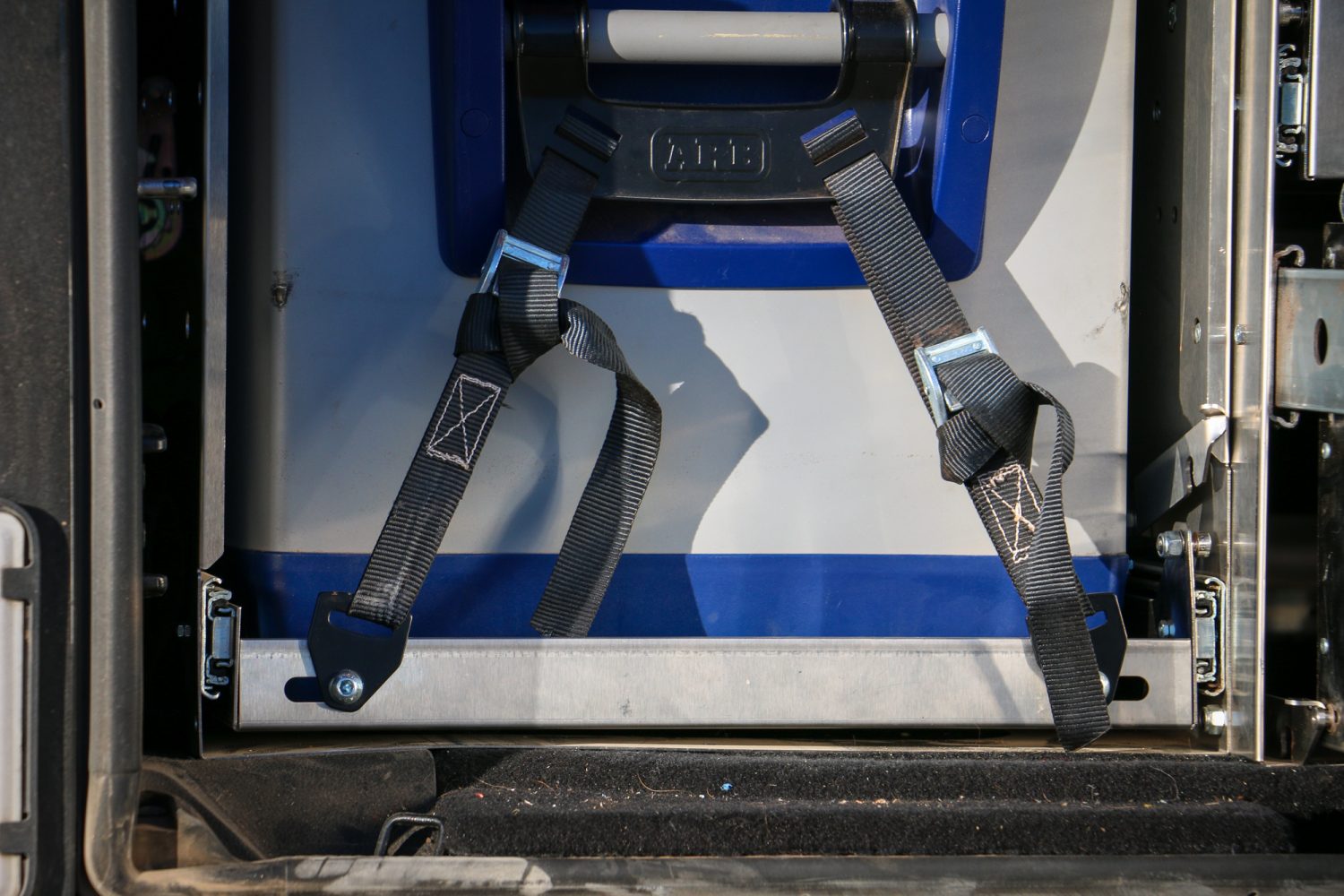


What you will never have a tough time doing though is taking the kitchen in or out of the vehicle. Unlike most storage systems which bolt directly into the floor using difficult to reach hardware, the Overland Kitchen uses quick-release latches which brings the removal or installation time to just 3 minutes. Yes seriously, 3 minutes to remove the fridge box, stove slide, and drawers. This allows you to have the convenience of the kitchen on trips, without sacrificing the storage space you might need on a daily basis. This feature also makes it a breeze to transfer between vehicles, so if you buy a new 4×4 or simply want to swap the kitchen to the minivan for a soccer tournament, you’re covered.
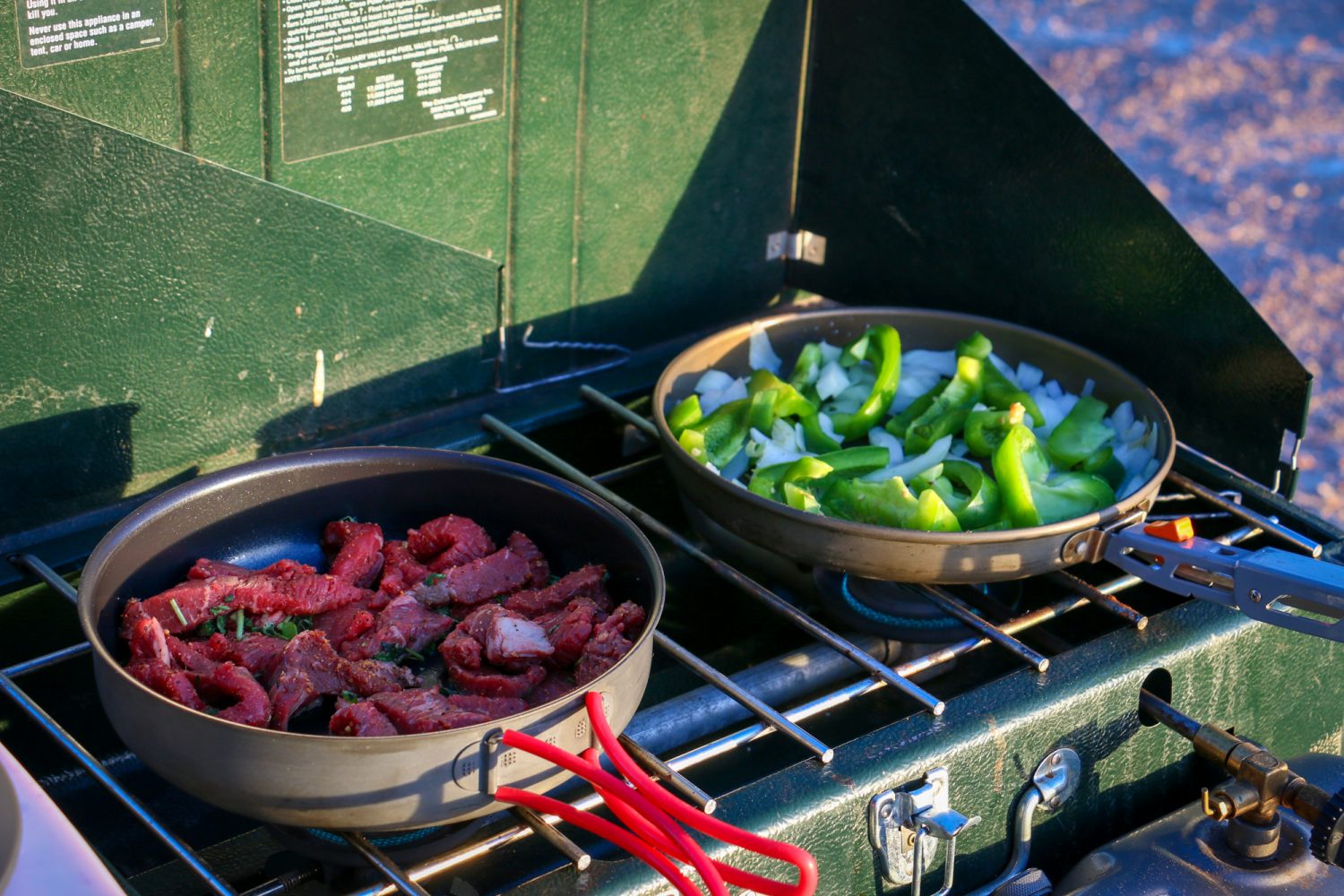
The stove section of the slide is clean and simple, a tray designed to accommodate many common camp stoves. That means there’s a good chance the model you’re using now will work, but if not, no worries; just pick up a Coleman or Partner Steel and you’re good to go.
 The fridge box is pretty straightforward as well, and designed to fit the 50-quart ARB and Engel models. It includes the venting I mentioned above, a low profile slide, and a lockout latch, but my favorite aspect of the fridge box is that it’s weight-bearing and shares the same height as the drawers. This made it easy to toss bags on top or secure other cargo without impeding the opening and closing of the fridge. If I had my own Overland Kitchen, I’d probably add tie-downs to the top, a feature that Al says just might be in the works.
The fridge box is pretty straightforward as well, and designed to fit the 50-quart ARB and Engel models. It includes the venting I mentioned above, a low profile slide, and a lockout latch, but my favorite aspect of the fridge box is that it’s weight-bearing and shares the same height as the drawers. This made it easy to toss bags on top or secure other cargo without impeding the opening and closing of the fridge. If I had my own Overland Kitchen, I’d probably add tie-downs to the top, a feature that Al says just might be in the works.
Field Performance
Now we get to the juicy part: the actual operation of the kitchen. While it’s not perfect, I have to say I’m seriously impressed. Deploying it was quick and easy, and there was a space for every cooking item I could think of, plus a little room to spare. The organization was intuitive, and by the end of the first day I could walk to the back of the vehicle and open up the drawers like it was my second home. Everything was just a quick latch and pull away.


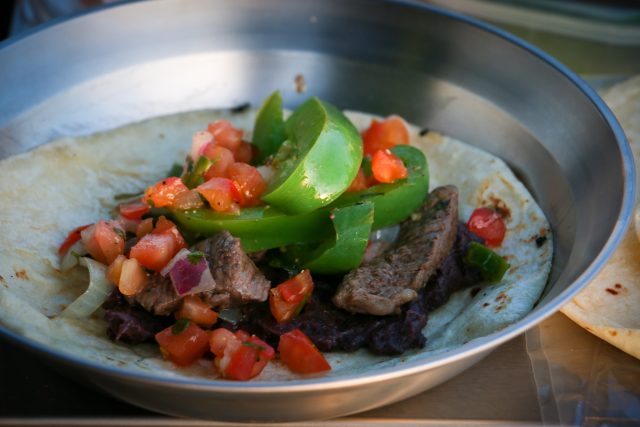
Preparing ingredients is usually my least favorite part of camp cooking, but I have to admit that with the Overland Kitchen it was significantly easier. Heck, I’d say I actually enjoyed it. A lot of factors contributed to that, but the one that really sealed the deal was the slide-out prep area. It’s such a simple addition that takes up almost no space when stowed, but it makes all the difference in the world when cutting veggies, separating ingredients, preparing side dishes, or performing a slew of other daily tasks. Even when it was supporting a lot of weight, the slide felt sturdy without excessive swaying or bouncing. This is largely thanks to the quick-release tensioners on each side of the slide, which drop into place effortlessly and release just as easily. It’s 15.5 inches by 22.5 inches, and we used it for everything from preparing our carne asada tacos to offloading photos and answering emails on our Macs.

Much of the cooking experience is determined by the stove and pots and pans you decide to use in your kitchen, so I truthfully don’t have much to say about cooking other than it was a breeze. I never felt cramped against the vehicle thanks to the long slide, and even when I stirred large pots of soup at the very end of the stove, the tensioners held the weight without sloshing. Basically, it’s a darn good platform to cook from, regardless of what stove you choose.



After nearly a week of use, I found only two complaints with the Overland Kitchen. The first was that the edge of the fridge box above the latch was a bit sharp. Al is in the process of fixing the issue now though, so I expect we’ll see a solution released quite soon.
The other is that I really don’t love the latch mechanisms. While they’re certainly simple, and will probably outlast many, if not all, of the other options, I really miss being able to depress a button or switch and roll out the drawer. It just gives the entire system a different feel when you can slide a drawer in and hear it automatically click into position.
 That being said, I understand why he chose them. Like the rest of his kitchen, they’re built to last. It’s a simple, tough, and easy to work on solution— sort of like the 40 series of kitchen systems. While it may not feel as smooth as some of the other wood and composite options out there, you’ll have a lot better chance of passing this one down to your kids, and with any luck, their kids.
That being said, I understand why he chose them. Like the rest of his kitchen, they’re built to last. It’s a simple, tough, and easy to work on solution— sort of like the 40 series of kitchen systems. While it may not feel as smooth as some of the other wood and composite options out there, you’ll have a lot better chance of passing this one down to your kids, and with any luck, their kids.
Final Thoughts
I’ve always felt that the best products are the ones you think about least. I know that sounds a little counterintuitive, but those are usually the pieces of gear that integrate so well into your routine they never even cross your mind until they’re gone; at which point you don’t know how you lived without them. The Overland Kitchen is definitely one of those products.
 If we were tired, we’d pull over and throw on a pot of coffee. If we were hungry, Al would stop and chop some fresh fruit for a quick boost, or make a can of chili to beat a brisk day. We never gave the kitchen any more thought than we would have opening the cupboards at home, or checking the fridge for snacks on a Friday night. It just worked, and that’s why I love it.
If we were tired, we’d pull over and throw on a pot of coffee. If we were hungry, Al would stop and chop some fresh fruit for a quick boost, or make a can of chili to beat a brisk day. We never gave the kitchen any more thought than we would have opening the cupboards at home, or checking the fridge for snacks on a Friday night. It just worked, and that’s why I love it.


On the first day of our trip, Al told me he had two goals when creating the Overland Kitchen. The first was to give people the simplest, most convenient, and most enjoyable cooking experience they have ever had in the wild. The second, was to help people spend less time digging around in their vehicle, and more time enjoying their hobbies, friends, and the great outdoors; a goal we can definitely get behind. Well, after a week of living with the Overland Kitchen, I’d have to say that Al has nailed both of those goals. My outdoor cooking experience has never been easier, and when it comes to enjoying nature, well, I’ll just let the pictures of our trip below speak for themselves.
At the end of the day the Overland Kitchen may not be the cheapest or the most refined kitchen system on the market, but it’s definitely one of my favorites. If you try it, I’d be willing to bet one of yours, too.
For more information, and current pricing, visit the Overland Kitchen website here.









